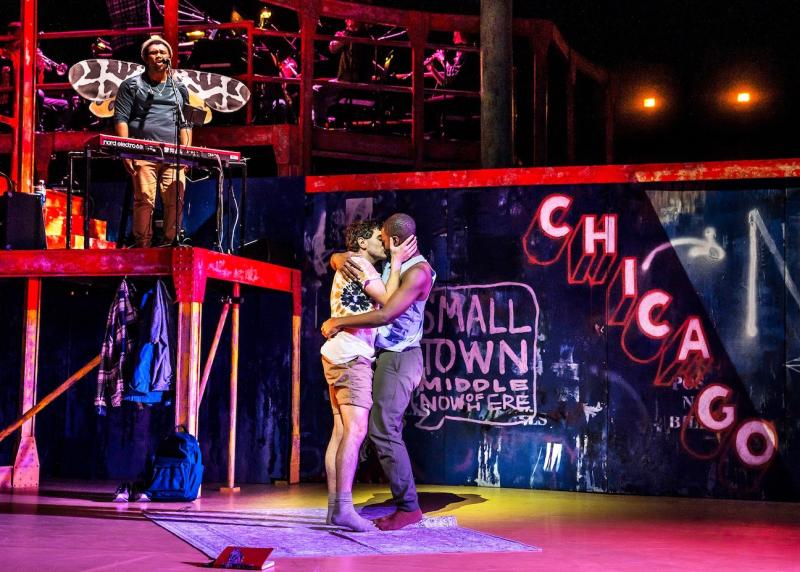It may be an unusual move, but very exciting! A Broadway version of the acclaimed, NY Times critic’s-pick musical, Illinoise, is set to open on Wednesday, April 24, 2024 at the St. James Theatre in a limited 16-week run through August 10, 2024. Illinoise is the theatrical adaptation of Grammy- and Oscar-nominated Sufjan Stevens’ concept album staged by Tony Award-winning director-choreographer Justin Peck (Steven Spielberg’s West Side Story, Carousel) and Pulitzer Prize-winning playwright Jackie Sibblies Drury (Fairview, Marys Seacole). The creative team includes scenic designer Adam Rigg, lighting designer Brandon Stirling Baker, sound designer Garth MacAleavey, costume designers Reid Bartelme and Harriet Jung, props designer Andrew Diaz, and mask designer Julian Crouch.
Live Design's Q&A with LD Brandon Stirling Baker takes us behind the scenes of this exceptional production on its way to the St James, where he is poised to make his Broadway lighting design debut (having served as assistant and associate in the past), as well as having a stellar career as a dance LD.
Live Design: What is the genesis of the project, have you been involved from the onset?
Brandon Stirling Baker: The idea of this project really began in 2010 when I first met the director and choreographer Justin Peck. We have been working together for a long time at the New York City Ballet and our very first collaboration was with the singer-songwriter Sufjan Stevens titled “Year of the Rabbit” that really inspired a long partnership.
Justin and I have collaborated on many works together but from the very beginning we’ve always talked about the original album “Illinois” and how it really spoke to our generation. Sufjan’s music naturally has the ability to work so beautifully with dance and also has this very cinematic quality. In the recent years, Justin started to develop a narrative and choreography directly inspired by the music of this album and in 2023 we created the first fully produced premiere at the Fisher Center at Bard College. This experience allowed us to really see how the show works as a dance-theater-music experience.
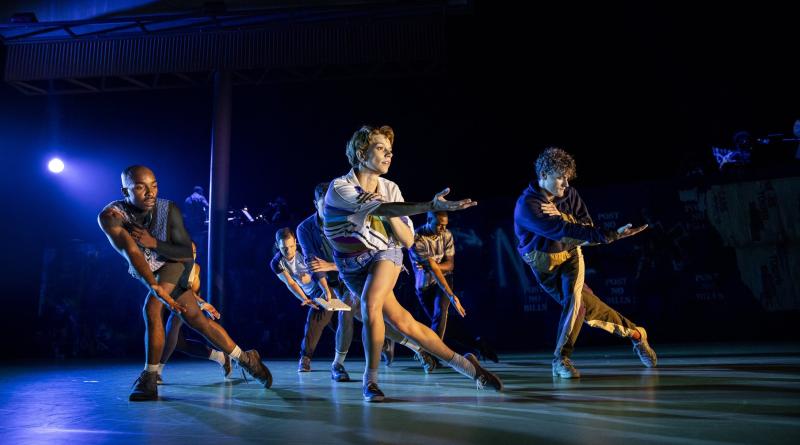
LD: How has the production grown into what it is today?
BSB: After Bard we took the show to Chicago Shakespeare Theater this past January for a brand-new version of the show and to develop further with a new scenic design and worked closely with playwright Jackie Sibblies Drury to work on a new show order, things shifted quite a bit during our preview process, which was both thrilling and challenging with the tight schedule. But we really found something special in this process. Justin and I come from the world of dance where previews don’t exist, we normally work fast so that was not hard, but this opportunity in Chicago allowed is to radically update the show in a meaningful way. These updates really happened for all elements of the show, it felt like a fresh start. A new beginning.
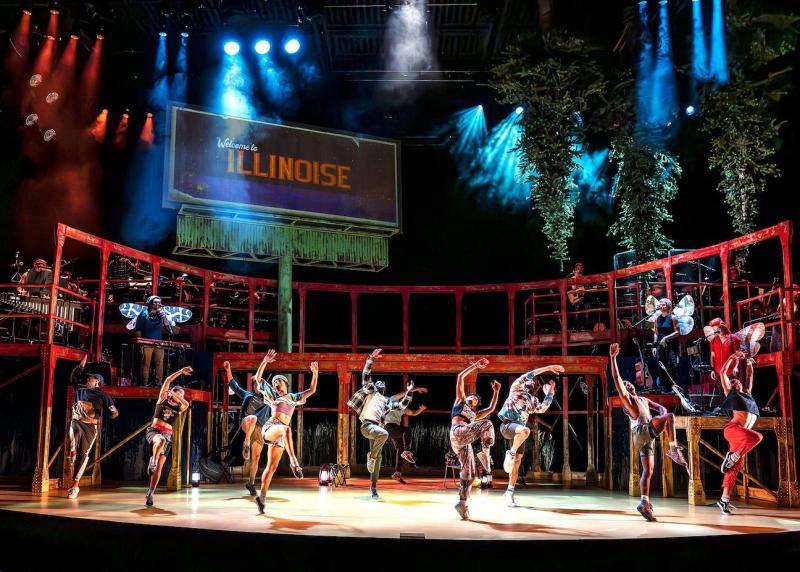
LD: How did you design the lighting in the Armory, from choice of fixtures to architecture of the rig?
BSB: What’s very interesting is that the original light plot I created for Bard Fisher Center was larger than any of the future versions of the show. Instead of the show getting bigger at each following production, it was actually simplified and edited down, I had to be very strategic both for financial reasons but also for speed and time. The light plot I designed for Chicago Shakes was extremely similar to the Park Ave Armory, I come from the mindset that a “big idea” can read in any size venue. So the idea of let’s say “diagonal backlight” was exactly the same at the Park Ave Armory as it was at Chicago Shakes, and it really did feel quite substantial in both spaces with the exact same fixture types and totals. I also carefully consider the look of the light plot in all of the work I do, I’m really not worried about cutting lights to keep the show looking clean. I’m really into keeping the show looking as slimmed down and efficient as possible. Limited ingredients but with purpose.
LD: How long was the rehearsal period at The Armory?
BSB: The process at Park Ave Armory was very expedited, we had to build a theater essentially from scratch. Seating, house lights, everything. So this left us with really only two days of tech before we had an audience. This does sound scary, but it’s honestly no different from what Justin and I normally do with the ballet schedule, we are bit used to the express track.
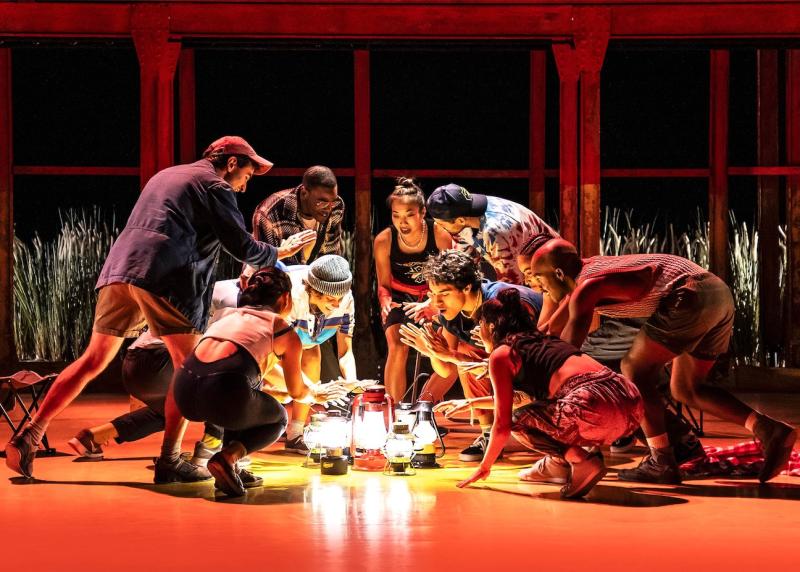
LD: Use of color?
BSB: Color is always my favorite topic. In a lot of my work I always begin with “white light” and this show is no different, however, the show is really designed around several short stories, and for this reason, I decided that the color logic was specific to each short story being told, for example the story of Jacksonville, is only lit by variations of gold, yellow and amber. The story of John Gacy is lit by only cold white light, the story of Superman, is lit by only variations of white and blue, Decatur is lit by light we experience in natural daylight, warm white. So all color choices are carefully crafted moment by moment. It’s simple, but I think (and hope) it allows the audience to understand each story is a new world for us experience.
LD: Specific challenges at the Armory?
BSB: All of the trim heights changed at the Park Ave Armory, In Chicago our max trim was 31ft and at the Armory we maxed out at 60ft. So it was a big leap, but It really worked, I did have to go through the entire show to purely look at intensity and often anything at 50% would suddenly be 100% intensity for it to read in this massive room, and the other challenge is that we had different equipment. The productions in Chicago and New York were provided by two different lighting shops and we had to design the show to work with two different gear types. It’s a challenge but I must say having the brilliant Jeff Englander as programmer made this truly possible.
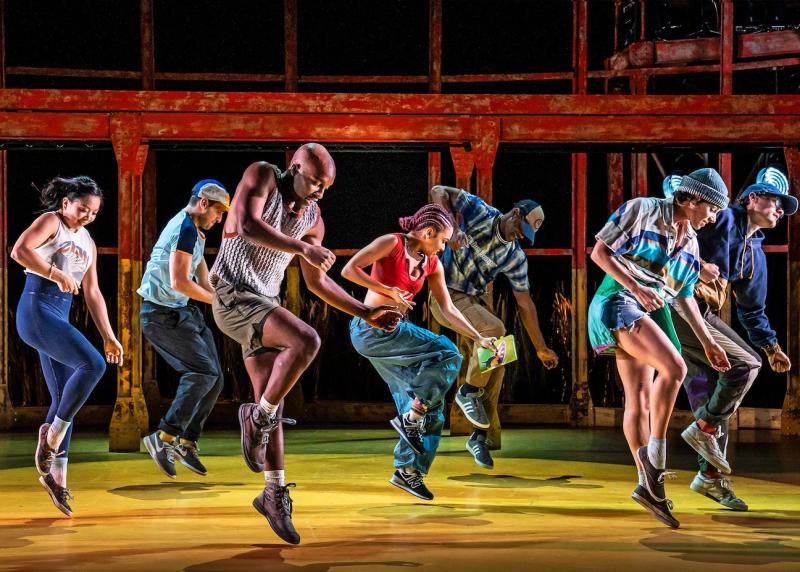
LD: How does the lighting inform the storytelling?
BSB: In this show there is no dialogue, only dance and vocals from the band, for this reason the show has the feeling of a silent film being watched in real time. This entire show is about telling different stories so it was important to me that each short story had its own unique color palette but also equally important that we had a neutral “home base” to return to in between each short story. This home base for me was a stylized gold campfire light. I think finding something visually familiar as an anchor to the human eye is really important in the storytelling in this show.
LD: It is unusual for a piece like this to go to Broadway - what changes do you anticipate to the lighting?
BSB: In all of the work I do I always try and find inspiration in the architecture of the theater. So for Broadway, there will be some added lighting systems that echo and respond to the shape of the St. James Theatre. It’s such a gorgeous room and I’m so excited to see how our show lives in this new space.
